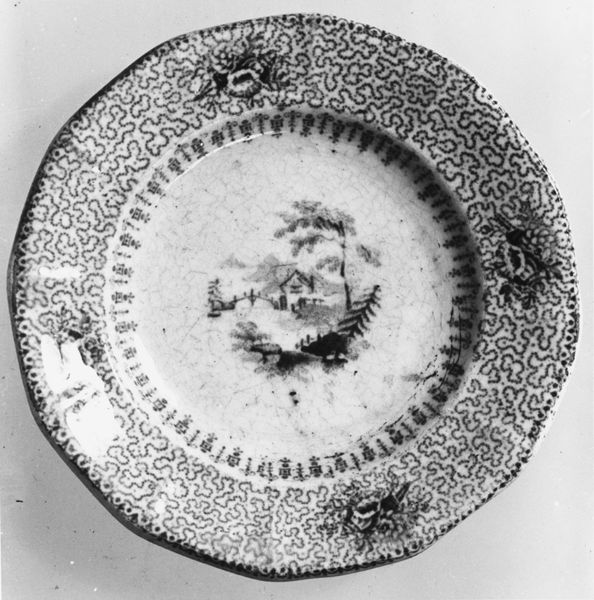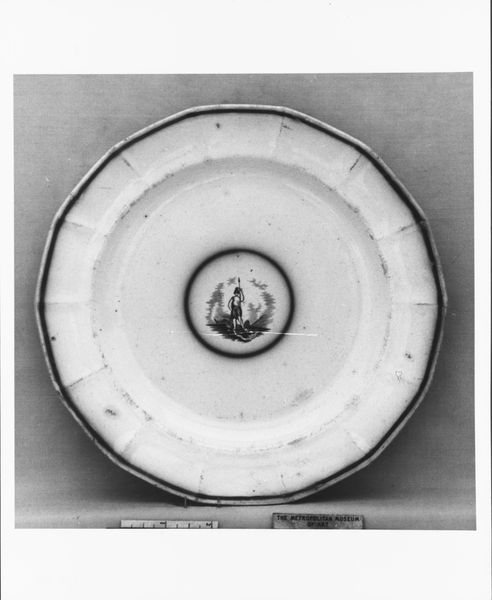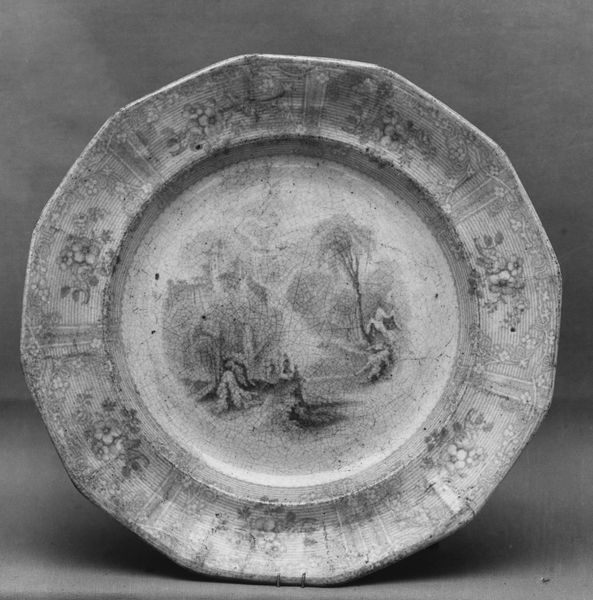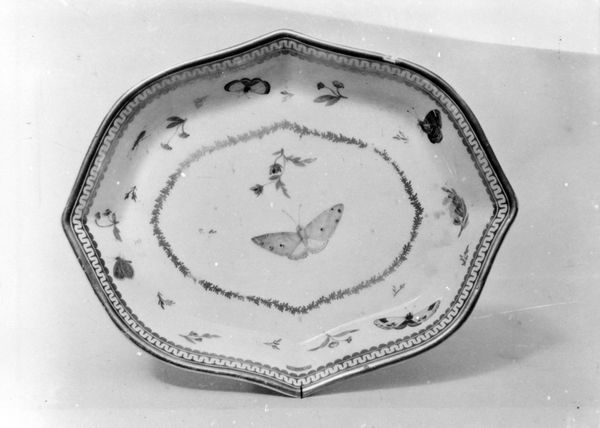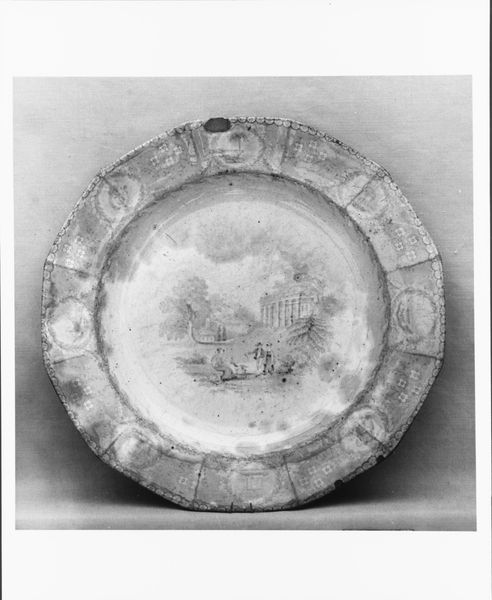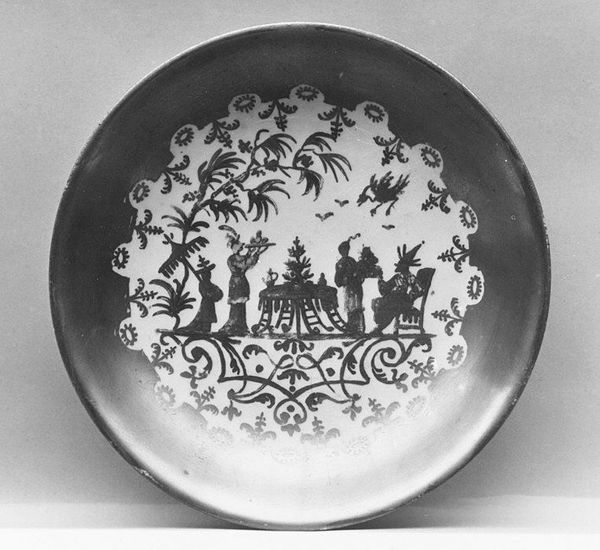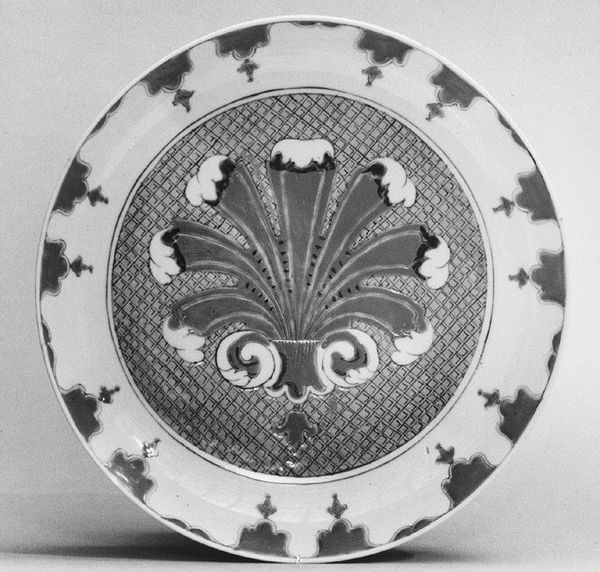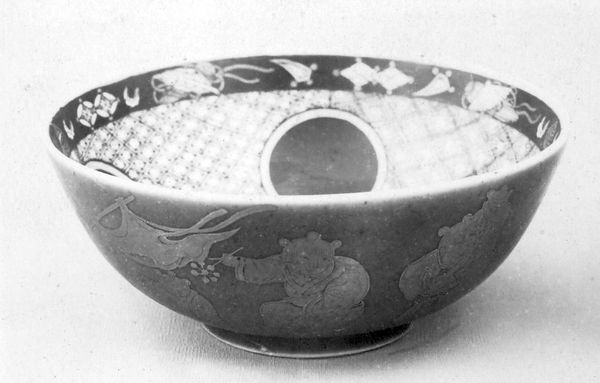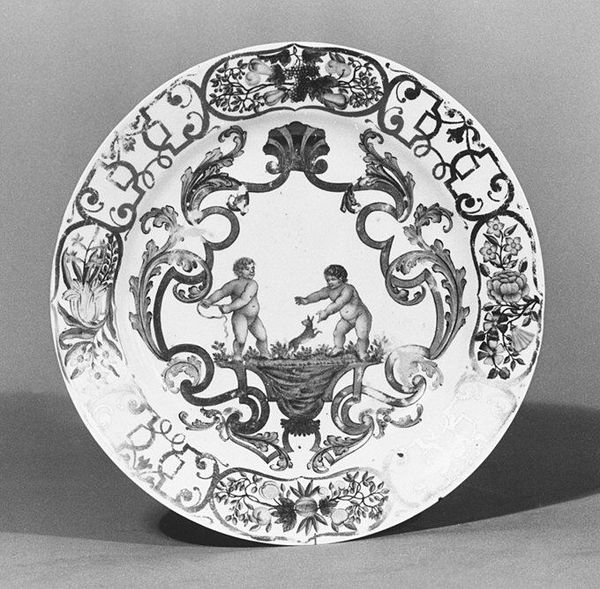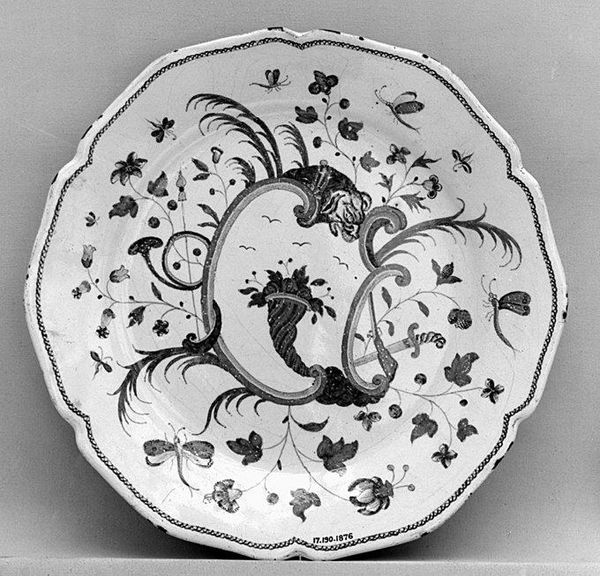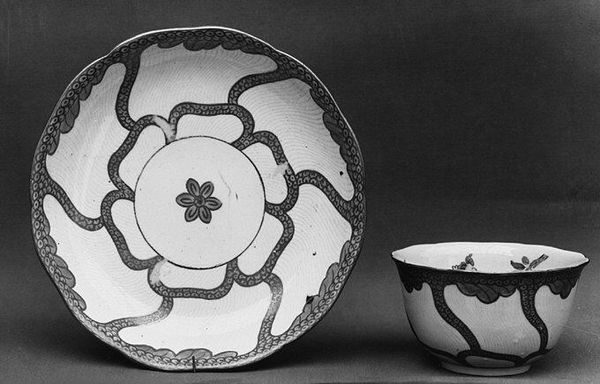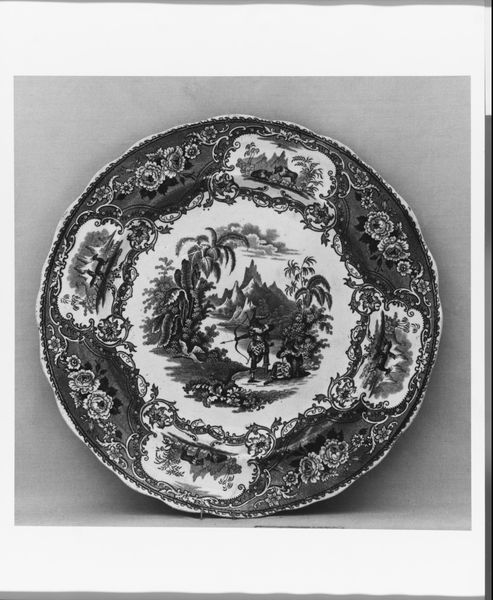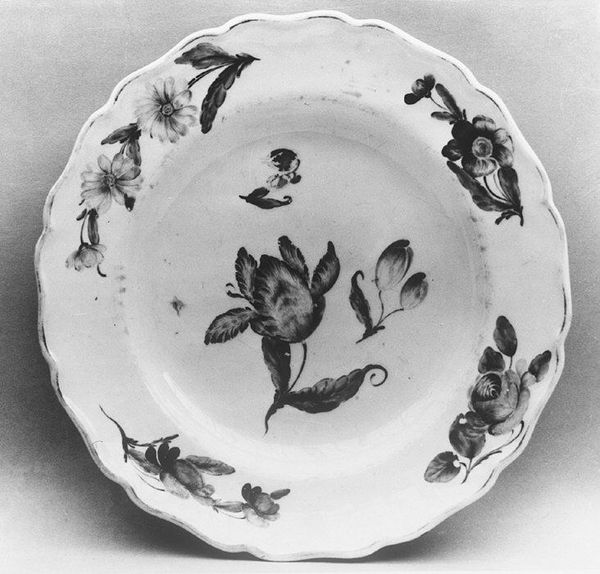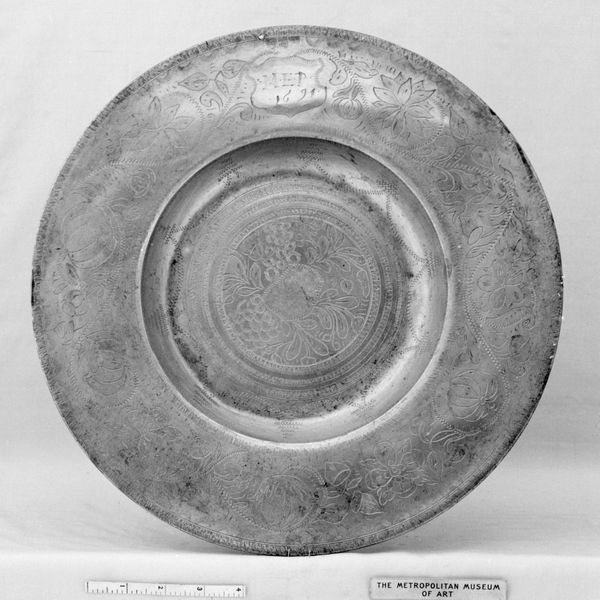
ceramic, earthenware
#
ceramic
#
flower
#
earthenware
#
folk-art
#
england
#
carved
Dimensions: Diam. 8 1/4 in. (21 cm)
Copyright: Public Domain
Editor: This ceramic plate, dating from 1800 to 1830 and crafted by Barker and Till, immediately strikes me as quite rustic. The design, especially the central flower, seems rather bold and graphic against the backdrop of its seemingly uneven, earthenware texture. How do you interpret the significance of a piece like this from a historical perspective? Curator: The fact that it's folk art made in England at that time situates this plate within a very interesting cultural landscape. Pieces like this offered ordinary people access to decorative objects that mirrored, in a way, the styles seen in wealthier households. Think of it as a form of democratization through design. The floral motif connects to broader artistic movements, but how do you think the roughness of the execution plays into its meaning? Editor: I suppose the visible imperfections could be seen as a sign of authenticity, of it being handmade rather than mass-produced, perhaps valued more for its unique character than its flawless finish. So, in a way, this plate embodies a certain cultural pride in handcrafted objects. Is it typical to find such distinct "maker's marks" within folk art of this era? Curator: Not necessarily maker’s marks per se, but stylistic fingerprints, absolutely. What is truly striking here is that folk art functioned as an alternative visual language. Unlike the highly regulated and exclusive world of academic painting, this plate visually spoke directly to—and was produced by—the burgeoning middle and working classes. The plate then became a tool for creating and conveying unique cultural identities and shared values. So, do you consider it a subversion of “High Art?" Editor: That’s fascinating! I never thought about it as a form of subtle cultural resistance. Now, when I look at it, I see more than just a simple ceramic plate; it's a quiet assertion of identity and values outside the artistic mainstream. I’ve learned today that folk art objects have very active lives, both aesthetically and politically. Curator: Absolutely. The 'ordinariness' becomes its power!
Comments
No comments
Be the first to comment and join the conversation on the ultimate creative platform.
